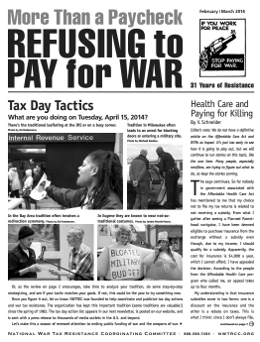The IRS has let us know a little more about what our tax forms will look like when we’re scrambling to get them done in :
| married filing jointly / surviving spouses | head of household | single / married filing separately | |
|---|---|---|---|
| standard deduction | $10,000 | $7,300 | $5,000 |
| personal exemption | $3,200 | $3,200 | $3,200 |
CCH Tax News has more:
The threshold amounts at which the phaseout of the tax benefit of the personal exemption begins and ends and the “applicable amount” for triggering the phaseout of itemized deductions have also been determined.
The standard deduction amount for individuals who may be claimed as dependents by other taxpayers for may not exceed the greater of $800, or the sum of $250 and the individual’s earned income. The additional standard deduction amounts for the aged and for the blind are $1,000 for each, and increase to $1,250 if an individual is unmarried and is not a surviving spouse. Further, the amount used to reduce the net unearned income of certain minor children subject to the “kiddie tax” at their parents’ marginal rate is $800. The maximum credit allowed in the case of an adoption of a child with special needs is $10,630; the maximum credit allowed with regard to other adoptions is the amount of qualified adoption expenses up to $10,630.
For tax years beginning in , the value used in determining the potentially refundable amount of the child tax credit is $11,000. With respect to education credits, 100 percent of qualified tuition and related expenses not in excess of $1,000 and 50 percent of such expenses in excess of $1,000 are taken into account in determining the amount of the Hope Scholarship Credit. Additionally, a taxpayer’s modified adjusted gross income in excess of $43,000 ($87,000 for joint filers) is taken into account in determining the reduction in the amount of the Hope Scholarship and Lifetime Learning Credits otherwise allowable under Code Sec. 25A(a).
Indexing has expanded the earned income credit (EIC) for . The earned income limit for the maximum credit has increased to $7,830 for a qualifying individual with one child, $11,000 for a taxpayer with two or more children, and $5,220 for a taxpayer with no children. The EIC will be denied if the aggregate amount of certain investment income exceeds $2,700.
Other inflation adjustments announced by the IRS for concern:
- the low-income housing credit;
- the amount used in determining the exemption from the alternative minimum tax for a child subject to the “kiddie tax;”
- the amounts deemed substantiated when paid by eligible employers in the transportation mainline pipeline construction industry under an accountable plan to employees;
- the overall limitation on itemized deductions;
- the limitations on the exclusion from gross income for qualified transportation fringes;
- the income from United States savings bonds for taxpayers who pay qualified higher education expenses;
- the maximum amount that an employer can exclude from an employee’s gross income under an adoption assistance program;
- the amounts used to calculate the state ceiling for the volume cap for private activity bonds;
- the election to expense certain depreciable assets under Code Sec. 179;
- the eligible long-term care premiums;
- the amounts used to determine if a health plan is a “high deductible health plan” for purposes of contributions to medical savings accounts;
- the maximum deduction for interest paid on qualified education loans;
- the dues paid to agricultural or horticultural organizations;
- the insubstantial benefit limitations for contributions associated with charitable fund-raising campaigns;
- the maximum amount of contributions that may be made to a “qualified funeral trust;”
- the income and net worth levels for determining expatriation to avoid tax;
- the maximum amount by which the estate tax valuation method may decrease the value of qualified real property included in a decedent’s estate;
- the annual exclusion for gifts;
- the amount of the excise tax on passenger air transportation;
- the reporting exceptions for exempt organizations with nondeductible lobbying expenditures;
- the reporting large gifts received from foreign persons;
- the maximum amount of a casual sale of personal property below which a tax lien will not be valid against a purchaser;
- the value of property exempt from levy under Code Sec. 6334(a)(2);
- the dollar amount used to determine the “2-percent portion” (for purposes of calculating interest) of the estate tax payable in installments;
- the hourly rate at which attorneys’ fees may be awarded to a prevailing party;
- the periodic payments received under qualified long-term care insurance contracts or certain life insurance contracts;
- the safe harbor rules for broker commissions on guaranteed investment contracts or investments purchased for a yield restricted defeasance escrow; and
- the contribution limits for health savings accounts.
Whew! Bookmark this page and come back after you’ve finished this year’s taxes so you can set up your spreadsheet for next year and figure out how much you can safely earn. You can also get the numbers directly from the horse’s mouth at the Treasury Department’s web site.

